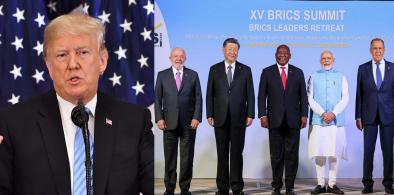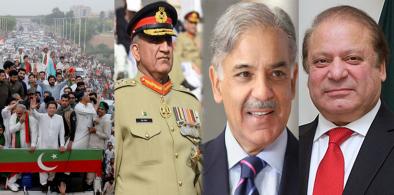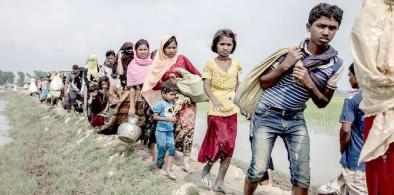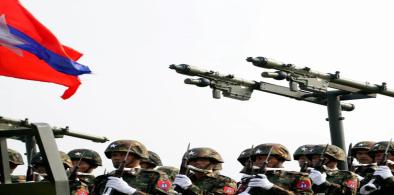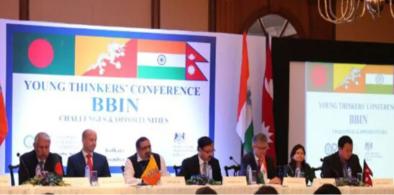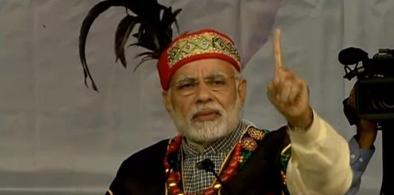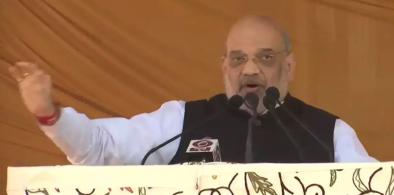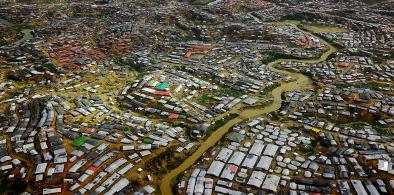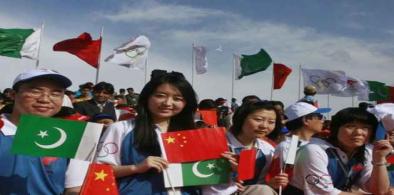Indian policymakers should be ready for the next phase of synchronized China-Pakistan actions to undermine India.
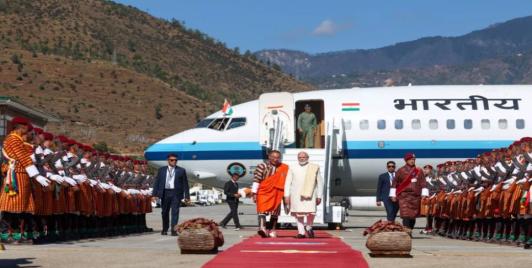
India-Bhutan Relationship Offers A Constructive Model For South Asia And A Peaceful Himalayan Region
Beyond India–Bhutan relations, the visit conveys a wider message to South Asia: cooperation grounded in respect, development, and stability remains essential in an uncertain global environment. As the region evolves, India appears to recognize the importance of maintaining strong partnerships without pressuring smaller neighbors or escalating strategic competition.
Red Fort Blast: India Facing A New Form Of Jihad?
The involvement of four doctors, one of whom allegedly executed the Red Fort blast, indicates a model that blends 'inspired' radicalisation with limited external facilitation. Interactions with certain outfits, Kashmiri terror commanders, and external handlers—if confirmed—point to an infrastructure that encourages attacks while maintaining plausible deniability.
The Nuclear Reckoning: Moment Of Awakening For India
It is time for India, along with like-minded nations across Asia, Africa, and Latin America, to articulate a shared agenda of non-alignment 2.0, not as a posture of neutrality but as a strategy of autonomy. The original Non-Aligned Movement (NAM) emerged from the Cold War’s bipolar tension; its modern counterpart must respond to multipolar volatility.
Endangered Indigenous Languages of South Asia: With Dominant Languages Replacing Mother Tongue, Are They Doomed To Die?
The world over, as is evident from the Atlas of endangered languages, there is a thrust of the dominant languages taking a precedence and most of the endangered languages are likely to disappear by 2100. Soon, possibly in the near future, the grand and great grand-children of the present generation may not be able to tell the story of their own mother tongue. Some of these languages will be lost forever and will only be limited to the pages of gazetteers and history books.
South Asia in the Developing Asia perspective: Need to balance external borrowings and growth impulses
The situation however has been somewhat different in certain countries of South Asia which have raised resources through external borrowings despite having current account deficits - Afghanistan, Maldives, Bhutan, Nepal Pakistan, and Sri Lanka. Caution needs to be exercised by them in resorting to such borrowings.
Pakistan: Another winter of discontent
The salvation for Pakistan’s body politic, wherein democracy is aspired by those who are not democrats themselves, may remain unfortunately with the men in uniform.
Rohingya crisis in Bangladesh: No light at the end of the return tunnel
There is no light at the end of the repatriation tunnel; one must look at other more viable and pragmatic scenarios rather than transporting almost a million people at gunpoint to Rakhine
Struggles for democracy and human rights in South Asia: Taking forward Asma Jahangir's legacy
From religious bigotry in India targeting Muslims, to Sri Lanka’s economic woes and food insecurity, to the plight of the Afghans, particularly women, discussions at the conference took up these and other issues like the impact of climate change, press freedom and creeping censorship, to transgender rights, enforced disappearances, and arbitrary detentions.
Celebrating India's festival diversity: Festivals can enhance income, employment, mutual understanding
India annually celebrated major festival days of all faiths, but these festivities are largely confined to their believers. If those communities, however, were to become more open to secular participation on the principle that if faiths are for believers, associated festivities are for all to enjoy.
Can Indian and Pakistani leaders rise above politics to build bridges through cricket?
Indian and Pakistani politicians can leverage the sport to resolve many outstanding issues between the neighbouring countries, provided there is an honest will on either side and the intentions are well-meaning. And the bilateral series can resume only if a Vajpayee-Musharraf-like initiative is taken by those occupying the highest positions in the two countries.
Lessons from Sri Lanka: Need for increased governmental accountability and transparency
South Asia must develop a common framework to hold politicians accountable and increase transparency in government dealings. Regional collaboration can reduce vulnerability.
Myanmar's suspected nuclear ambitions will pose a grave threat to region
If Myanmar acquires a nuclear capability, it would be a disaster for South and Southeast Asia. A nuclear Myanmar is not in India, China, or other neighbouring countries' interests. Recent border tensions between Myanmar and Bangladesh are the best example to understand the gravity of the situation.
The evolving terror funding matrix: Pakistan, ISI and D Company and its global criminal web
Since Dawood moved to Karachi, the D Company syndicate has expanded incredulously. He is said to have invested over USD $28 billion in assets in Karachi alone and has diversified his businesses in several countries such as India, Morocco, the UK, UAE, Switzerland, Hong Kong, Thailand, Sri Lanka, Italy and France.
An agenda for BBIN countries: An idea whose time has come
The demonstrable success of BBIN cooperation may draw Sri Lanka and Maldives also into its ambit in the near future. India's government and corporate sectors must work together to make BBIN cooperation a success to mutual advantage.
Red flags in India's Northeast: Is Act East Policy losing focus?
The question also arises – is Delhi losing focus and getting diverted from the AEP by QUAD, Chinese influence on RCEP, and so on. If so then Delhi must decentralise the AEP to make it effective
BJP seeks to etch new lines on the political map of Jammu & Kashmir: Will this end its electoral drought in the Valley?
This doesn’t erase the irrefutable fact that a community that used to align with Kashmiri parties until now was shifting its preferences, the impact of which is bound to be felt in the electoral battle in the forthcoming assembly polls. If the BJP succeeds in reaping the electoral benefits in Jammu & Kashmir, it will have much more to tell the nation ahead of the 2024 polls in the country.
Bangladesh's Rohingya camps are growing security and environmental hazard
Activities of militant organizations have developed around the Rohingya camps in Cox's Bazar. A web of militancy is spreading in the camps with the money coming from six countries including the Middle East and Pakistan.
Pakistan's Chinese bugbear: Growing attacks pose a new security challenge for Islamabad
The Chinese presence in Pakistan, with or outside of the CPEC, and the TTP's defiance, although not directly related, do pose growing security challenges to Pakistan and China, especially when the two want to combine forces to extend the CPEC to Afghanistan.




